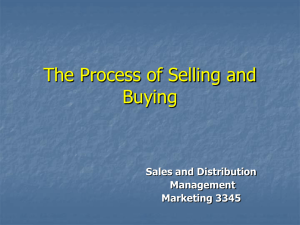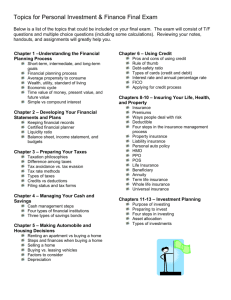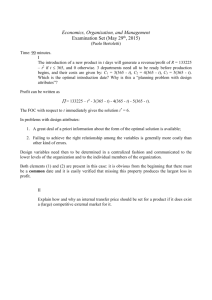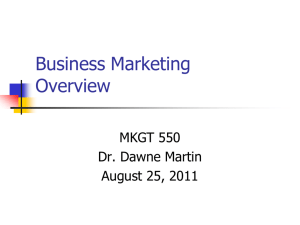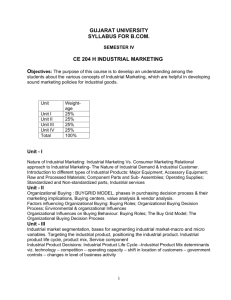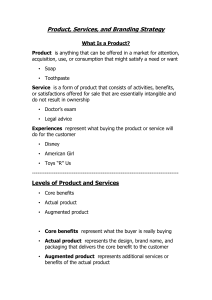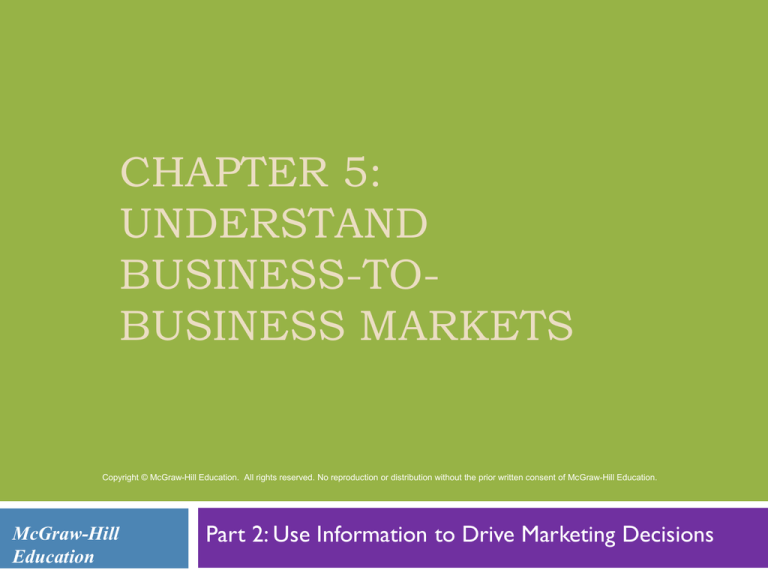
CHAPTER 5:
UNDERSTAND
BUSINESS-TOBUSINESS MARKETS
Copyright © McGraw-Hill Education. All rights reserved. No reproduction or distribution without the prior written consent of McGraw-Hill Education.
McGraw-Hill
Education
Part 2: Use Information to Drive Marketing Decisions
LEARNING OBJECTIVES
2
Recognize the importance of B2B marketing
Understand the differences between B2C and B2B markets
Understand the critical role of the buying center and each
participant in the B2B process
Learn the B2B purchase decision process and different buying
situations
Comprehend the role of technology in business markets
DIFFERENCES BETWEEN BUSINESS
AND CONSUMER MARKETS
3
Relationship
with
Customers
Number and
Size of
Customers
Complexity of
Buying Process
Geographic
Concentration
Complexity of
the Supply
Chain
EXHIBIT 5.1
DIFFERENCES BETWEEN BUSINESS AND CONSUMER MARKETS
B2B Market
Consumer Market
Relationship with Customers
Invest more in maintaining
personal relationships
Impersonal; exist through electronic
communication
Number and Size of
Customers
Few put larger customers
More customers but buy in smaller, less
frequent quantities
Geographic Concentration
Suppliers located Strategically by the
Buyers
Could be anywhere in the world
Complexity of Buying Process
Complex process that can take a long
time (years in some cases) and involve
more people
Fewer people, often just one, directly
involved in the purchase decision and
the purchase decision is often based on
personal and psychological benefits
Complexity of Supply Chain
Direct from supplier to manufacturer
Complex with products moving through
the channel to reach the consumer
Demand for Products
Derived from consumer demand,
fluctuates with changes to consumer
demand and more inelastic (less price
sensitive)
Consumer perceptions about their own
needs mitigated by environmental
factors and marketing stimuli
4
DIFFERENCES BETWEEN BUSINESS
AND CONSUMER MARKETS
5
Demand for Products and Services is Different in a
Business Market
Product
Demand differs on three dimensions:
Derived
Demand: If consumers are buying finished
products, producers need more inputs.
Fluctuating Demand: the difference between consumer and
business product demand
Acceleration Effect
Inelastic
Demand : Producers by raw materials even if the
price rises.
EXHIBIT 5.2
EXAMPLES OF ELASTIC AND INELASTIC DEMAND
6
BUYING SITUATIONS
7
Factors influencing business
buying decisions
Nature
of the purchase
Number of people involved in
the decision
Understanding of the product
being purchased
Time frame for the decision
BUYING SITUATIONS
8
Straight Rebuy
Modified Rebuy
New Purchase
BUYING CENTERS
9
A number of individuals
with a stake in the
purchase decision come
together to form a buying
center that manages the
purchase decision process
and ultimately makes the
decision.
EXHIBIT 5.4
BUYING CENTER PARTICIPANTS
Users
Actual
consumer of
the product
Decider
Person(s)
responsible for
making final
decision
Initiator
Could be user
or executive
who starts the
process
Buying
Center
Gatekeeper
Controls
access to key
participants in
the process
Influencer
Individuals in
and out of
company that
affect decision
10
EXHIBIT 5.5
Who is part
of the buying
center?
MARKETING CHALLENGES IN BUYING CENTERS
Who are the
most
significant
influencers?
What are the
decision criteria
for evaluating
the various
product options?
Target
Market
11
12
THE PLAYERS IN BUSINESS
TO BUSINESS MARKETS
The North American Industrial Classification
System (NAICS)
Manufacturers
Original
Equipment Manufacturer (OEM) purchases
End User purchases
Capital Equipment
Materials, Repairs and Operational (MRO)
13
THE PLAYERS IN BUSINESS
TO BUSINESS MARKETS
Resellers
Government
Institutions
EXHIBIT 5.7
MODEL OF BUSINESS MARKET CONSUMER DECISION PROCESS
Problem
Recognition
Define the Need
and Product
Specifications
Search for
Suppliers
Seek Sales
Proposals Response to RFP
Making the
Purchase
Decision
Post- Purchase
Evaluate of
Product and
Vendor
14
THE BUSINESS MARKET
PURCHASE DECISION PROCESS
15
Problem Recognition
Define the Need and Product
Specifications
Request
for Proposal (RFP)
Seek Sales Proposals in Response to RFP
THE BUSINESS MARKET
PURCHASE DECISION PROCESS
16
Making the Purchase Decision
Product
Choice
Service
Criteria
Product
Selection
Value
Criteria
Financial
Criteria
THE BUSINESS MARKET
PURCHASE DECISION PROCESS
17
Making the Purchase Decision
Product
Selection uses three criteria to evaluate
the product choice
Financial
Criteria
Value Criteria
Service Criteria
Supplier
Choice
Reliability
Personal
and Organizational Factors
THE BUSINESS MARKET
PURCHASE DECISION PROCESS
18
Post-Purchase Evaluation of Product and
Supplier
Assess
product performance
Consider the level of support provided by
seller
Expect follow up after sale
19
THE ROLE OF TECHNOLOGY
IN BUSINESS MARKETS
Electronic Data Interchange (EDI)
E-Procurement
Industry Purchasing Sites
Business Function Sites
Extranet to Major Suppliers
Company Buying Sites
Photo Credits
20
Slide 5-7: BananaStock
Slide 5-9: Comstock Images
Slide 5-13: Dennis MacDonald


